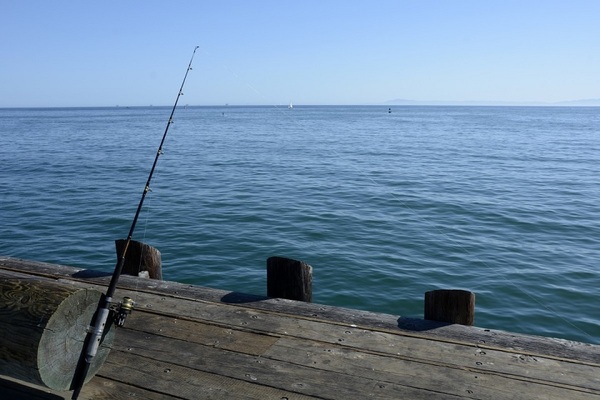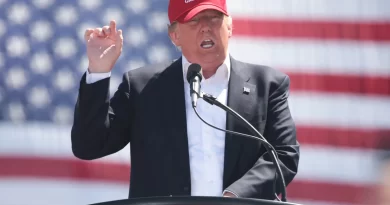Fishing as a Guide to Election Integrity
December 30, 2022
Some people think my hometown of Cleveland is a dull place, but we have plenty of excitement here. For example, there were two men who nearly won $30,000 in a 2022 walleye fishing tournament on Lake Erie. And they won lots of money before, including about $150,000 worth of prizes in 2021. What was their secret? Their fish weighed more than anyone else’s fish. It’s pretty simple, right?
In the last competition, however, a skeptical judge did something that had never been done before: He sliced open one of the fish, and inside he found an amazing amount of weight that looked like lead balls. Unless those were humongous kidney stones, the men were cheating. They are now charged with multiple criminal offenses, including attempted grand theft and possession of criminal tools. (Lead balls?)
In a fishing competition, it is not good enough to merely count the pounds: It is necessary to make sure you are counting pounds of real fish, not lead balls. That same principal should apply to our elections. In most cases, however, election administrators simply count the ballots without making sure that they represent real voters.
We just saw a great example of this with the Kari Lake-Kattie Hobbs governor’s race in Arizona. The Maricopa Elections Department probably counted the votes with great precision, but I can guarantee you that there is no way to determine who actually won the election. I base that audacious statement on the sworn declarations of three whistleblowers cited in the Kari Lake lawsuit, and on my knowledge of the shenanigans in the 2020 Arizona election.
A quick look back at the 2020 election:
In January 2022, Dr. Shiva Ayyadurai, a very smart scientist with several MIT degrees, tested a scientifically-selected sample of 499 signatures found on Maricopa County ballot envelopes from the 2020 election. For that test, which was performed on behalf of the Arizona Senate, Ayyadurai created a panel of six people to compare the signatures on the ballot envelopes to the signatures already on file with the county.
Three of the six evaluators were forensic document examiners. With regard to 60 signatures (12 percent) there was unanimous agreement that the signatures did not match the signatures on file. If we extrapolate those results to the county at large (not the state — just one county) we get as many as 204,000 highly questionable signatures. And that is for an election where the statewide Biden-Trump vote difference was only 10,400. For a real auditor, that finding would preclude certification of the election. (Fortunately for our President, there are no real auditors in most U.S. election departments.)
The Lake Complaint regarding the 2022 midterm election
According to Kari Lake, Maricopa County had 32 employees performing signature verification and/or ballot “curing.” (In Arizona, curing generally involves contacting the voter to confirm that she is the true signator.) Three of those 32 workers stepped forward as “whistleblowers,” making disturbing claims in sworn declarations. Here are a few of the statements of Andy Myers, one of the three whistleblowers. His job was to cure signatures that did not seem to match registration records:
“The math never added up. Typically, we were processing about 60,000 signatures a day. I would hear that people were rejecting 20-30% which means I would expect to see 12,000 to 15,000 ballots in my pile for curing the next day. However, I would consistently see every morning only about 1000 envelopes to be cured. We typically saw about one tenth of the rejected ballots we were told we would see.
The most likely explanation for this discrepancy is that the level 2 managers who re-reviewed the rejections of the level 1 workers were reversing and approving signatures that the level 1 workers excepted and rejected…”
The level 2 managers were changing about 90% of the rejected signatures to accepted.”
In effect, they were bypassing the curing procedure.
 The other two whistleblowers made similar declarations, except that their rejection rates were even higher: 35 to 40%. Most of those rejected signatures were supposedly cured, without contacting the voter. Whistleblower Yvonne Nystrom felt she was being pressured to approve signatures because they were being reprocessed, even though they had already been reviewed at all levels:
The other two whistleblowers made similar declarations, except that their rejection rates were even higher: 35 to 40%. Most of those rejected signatures were supposedly cured, without contacting the voter. Whistleblower Yvonne Nystrom felt she was being pressured to approve signatures because they were being reprocessed, even though they had already been reviewed at all levels:
These 5,000 to 7,000 ballots had already been through the full level 1, 2, and 3 process and [had] been rejected. Therefore, I do not know why [we were] going through them again, and that is why it seemed that Celia wanted them approved.”
The third whistleblower, Jacqueline Onigkeit, seemed to suggest that the curing process was out of control:
In order to perform the curing process, we were given a batch of stickers to place on a ballot… One of the problems with the stickers was that nothing prevented a level 1, 2, or 3 worked (sic) from requesting a massive amount of ‘approved’ stickers and placing them on ballots. Again, observers did not watch any level 3 work and did not watch most of level 2 work. Once stickers were placed on ballots, there was no record on the ballot or elsewhere to determine who placed the sticker there” [emphasis added].
In Arizona there is a two-step process for verification of signatures. The Kari Lake lawsuit correctly describes that process, which is established in section A.R.S. § 16-550:
- The Recorder or the Recorder’s designee must “compare the signatures thereon with the signature of the elector on the elector’s registration record.” If there is a match the ballot is accepted.
- “If the signature is inconsistent with the elector’s signature on the elector’s registration record, the county recorder or other officer in charge of elections shall make reasonable efforts to contact the voter, advise the voter of the inconsistent signature and allow the voter to correct…”
According to the whistleblowers, the second step was being ignored. Instead of contacting voters, level two managers just reversed the assessment of the level one reviewers, or forced them to keep repeating the first step. That would mean that Katie Hobbs was not necessarily elected by the people of Arizona — rather, she was elected by “level two managers.”
The Judge rules
Lake never got to pursue this part of her lawsuit because the judge, the Honorable Peter A. Thompson, threw it out on the basis of a “process” argument: laches. He bizarrely cited Kerby v. Griffin, 48 Ariz. 434, 444-46 (1936) as a basis for dismissing the Lake claim:
Procedures leading up to an election cannot be questioned after the people have voted, but instead the procedures must be challenged before the election is held.”
In other words, Kari Lake was too late.
When I read the judge’s statement, two thoughts came to mind: Judge Thompson wanted Lake to lose, or he did not read the complaint. Scour that document as much as you want, you will find no quarrel with established procedures. Rather, Lake was asserting that the established procedures were being ignored or abused, and that is something that would not be evident until the election was concluded. Laches could not possibly apply.
However, there is a broader question to consider: Why the hell does the U.S. even use a system where tens of thousands of votes can be counted or not counted, depending on whether the level one reviewer prevails or the level two reviewer prevails? Why is the U.S. the only major country that uses a system that is about as accurate as a Ouija board?
I think most of us already know the answer. It is something like this:
- One of the two major political parties in the U.S. relentlessly fights any attempt to require ID for voting, and will call those who want an ID requirement, “racists.”
- The other political party knows that the absence of an ID requirement results in cheating — sometimes a little and sometimes a lot. However, that party is too weak or disorganized to force the issue.
All 47 European countries plus Canada and Mexico require a hard form of ID — often with a photo. In its rejection of the ID requirement, the U.S. stands alone.
If there is to be integrity in our elections, and they are to be as accurate as a typical Cleveland fishing tournament, we must make sure that the ballots we count are the real deal — not phonies. It is imperative that proof of identity be required from all voters.
Joe Fried is an Ohio-based CPA who has performed and reviewed hundreds of certified financial audits. He is the author of the new book, Debunked? An auditor reviews the 2020 election –– and the lessons learned (Republic Book Publishers, 2022). It provides a comprehensive overview of irregularities that affected the 2020 election.
Image: PxHere


